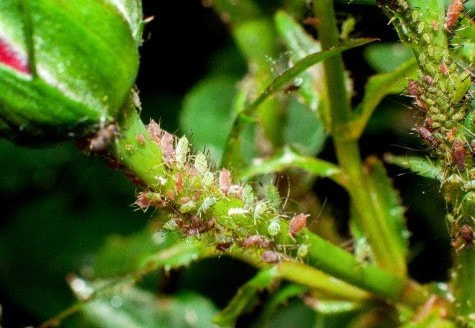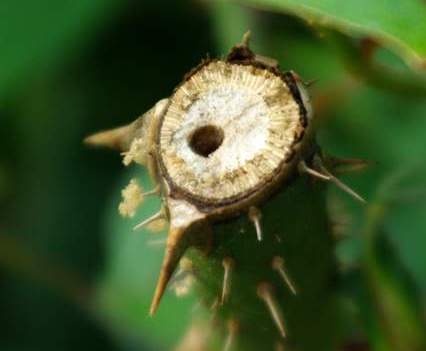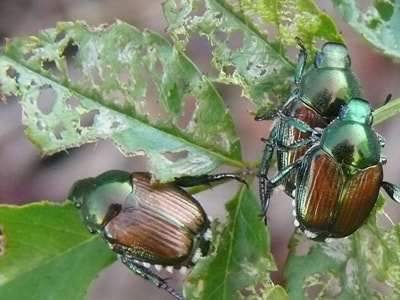|
Information, including identification, symptoms and control, related to most common pests that plague rose growers in Western Missouri and Eastern Kansas.
Insects that chew and suck can be especially harmful to roses. Not only do they disfigure and weaken the plant, they can also spread disease pathogens.
|
Select Below to Learn More About
|
Aphids
|
Description:
Symptoms
|
Control
- Easily controlled, washing the plant with a stream of water will knock the aphids off the plant, and since most cannot fly, they will not be able to return to the plant.
- Most insecticides will control aphids.
- Natural enemies that feed on aphids such as lady beetles, lacewing larvae and parasitic aphid wasps.
|
Reference: K-State Extension, Common Pest Problems PDF
|
Cane Borers
|
Description:
Symptoms
|
Control
- The most common cane borer wasps are predators, so keeping aphids under control will remove their food source.
- Damaged canes should be cut below the larvae to prevent generation of cane borer wasps.
- Borer damage can be prevented by sealing each cut cane after pruning with waterproof wood glue.
|
Reference: Plant Talk, Colo. State, Rose Cane Borer PDF
|
Japanese Beetles
|
Description:
Symptoms:
Control:
|
|
References:
|
Leaf Cutter Bees
|
Description:
Symptoms
Control
Reference: Missouri Botanical Garden, Leaf Cutter Bees |
|
Midge
|
Description:
Symptoms:
Control:
|
|
Rose Slug
|
Description:
Symptoms:
Control:
|
|
|
References:
|
Two-spotted Spider Mites
|
Description:
Symptoms:
Control:
|
|
|
Reference: U of MN, Spider Mites
|
Thrips
|
Description:
Symptoms:
Control:
Reference: |
|










